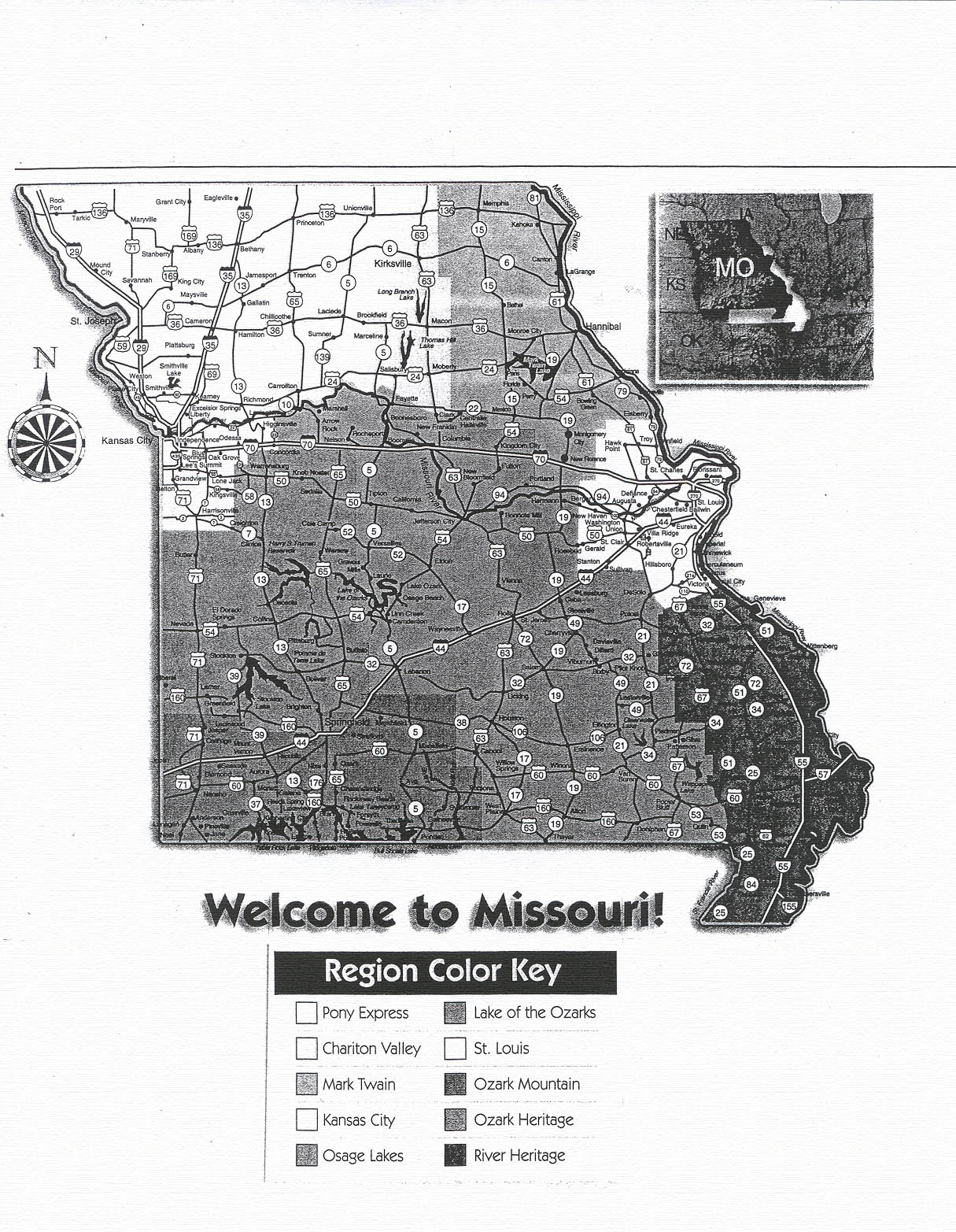As a culminating activity in my classroom's study of Missouri, we plan a vacation in our state. This project based activity involves cooperative learning, map reading, mathematical calculations, the economic principles of scarcity and opportunity cost, and the use of technology to gain information and make calculations.
Students will learn about recreational activities in the State of Missouri as well as become familiar with the state's history
- By working collaboratively to research an assigned area using The Missouri Official Travel Guide, Missouri State Highway Map, pamphlets, brochures, and the Internet
- By utilizing map skills to read, locate, and determine highways and distances
- By using Math skills to figure, plan, and make decisions based on a predetermined budget and travel constraints
- By using the Economic principles of opportunity cost, scarcity, and decision making, and
- By learning to use a computer spreadsheet to keep a running tally of costs.
Missouri Standards:
- Social Studies 4, 5, 7
- Mathematics 1, 3
- Communication Arts 1, 6
- Fine Arts 1
The Missouri Official Guide (obtained from: The Missouri Department of Tourism) [one per pair of students]
Missouri State Highway Maps [one per pair of students]
Teacher-obtained pamphlets and brochures from each area
Internet information gained from Chambers of Commerce in the vacation area
Teacher-created spreadsheet [students use to fill in cost amounts]
Teacher-created outline page and worksheets
1. Students will be paired to examine one of ten vacation regions in our state (asdetermined by the Missouri Official Travel Guide).
2. The students use map-reading skills in figuring out the roads and distances to reach a chosen "starting city" in their travel region. Mileage distances (based on actual miles) are determined from the Missouri Highway map provided. Mileage is figured to determine the cost to travel to this city from Blue Springs, Missouri.
3. Once the "starting city" is determined, students are allowed to "explore" the region using the Missouri Official Travel Guide, pamphlets obtained by the teacher from each area, and by using the Internet to contact cities within their region.
4. Requirements are explained as outlined in the attached sample packet. Students are shown that economic decisions must be made regarding food, lodging, entertainment, and travel. Students are required to stay within their allotted "budget" of $1500.
5. A record of each day’s activities is kept. (See plan attached) The cost of each day’s plan is figured. Then a total is determined for the 5-day imaginary journey.
6. Students are taught to use a spreadsheet on the computer (see attached plan) in order to keep a running tally of each total.
7. A scrap book/photo album is created using pictures either drawn, cut from pamphlets, or obtained from the Internet.
8. An oral presentation is made to the class describing their adventure.
Student assessment/reflection of own work
Accurate Mathematical calculations on the worksheet
Collaboration efforts with partners based on daily "score" of cooperation
Production of the photo album/scrap book
Oral Presentation to classroom persuading others to visit their region
Conclusion:
Last year’s students enjoyed this activity immensely. They were amazed at the complexity of planning a vacation. They were also overwhelmed by the cost involved in such a venture. Many eyes were opened to the number of economic decisions that must be made to stay within a budget. Several students indicated that they wanted to present this information to their parents to "actually go" on their fictitious vacation just to see if itwould work! They learned that there is a lot to see and do in each region of our state.
| Missouri Vacation Planning | _________________________________________________________________________ |
| Score | _________________________________________________________________________ |
| Self-Score | _________________________________________________________________________ |
During my work with the Missouri Vacation Planning Unit, I have learned:
